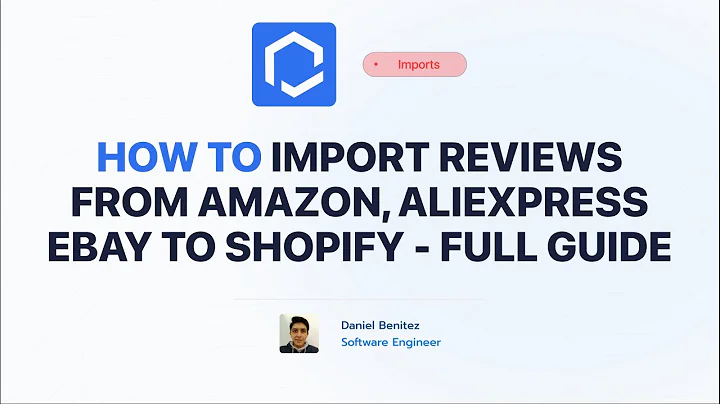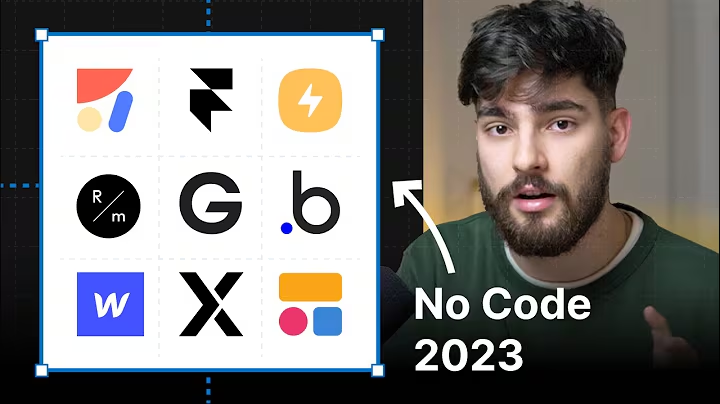Optimize Your E-commerce Site with Dynamic Azure Structure
Table of Contents:
- Introduction
- The Challenge of Displaying Product Options
- The Importance of Dynamic Azure Structure
- Example: Rear-View Mirrors for Ford Mustangs
- Pros and Cons of Separate Product Pages
- The Solution: One Product Page with Drop-Down Options
- The Benefits of Dynamic Product Page Titles and Meta Descriptions
- Indexing Sub-Option Pages in Google
- Case Studies: Clients with Thousands of Sub-Options
- The Power of Long Tail Keywords
- Conclusion
Introduction
If you have a large e-commerce site with a multitude of products and numerous options for each of those products, you may be wondering how best to display these options to maximize your sales potential. This article will explore the concept of dynamic Azure structure and its role in optimizing the display of product options on your e-commerce site. By the end of this article, you will understand how a well-designed product page with dynamic options can help you increase conversions and improve your search engine rankings.
The Challenge of Displaying Product Options
When you have thousands of products and countless options for each of those products, it can be challenging to determine the most effective way to showcase them. Having separate product pages for every single combination of options can lead to a diluted authority and hinder your overall SEO efforts. On the other hand, having just one product page with drop-down options may result in missed opportunities to rank for long tail keywords. Finding a balance is essential, and that's where dynamic Azure structure comes into play.
The Importance of Dynamic Azure Structure
Dynamic Azure structure refers to a specific script that allows you to have a single product page with drop-down options while generating dynamic product page titles and meta descriptions based on the selected options. This script ensures that every sub-option can be indexed by search engines without diluting your website's authority. By utilizing this functionality, you can achieve both an optimized user interface and improved conversion rates.
Example: Rear-View Mirrors for Ford Mustangs
To illustrate the benefits of dynamic Azure structure, let's consider an example. Imagine you sell rear-view mirrors for various brands and models, including Ford Mustangs from 2010 to 2020. You could create separate product pages for each combination of year, make, and model. However, this would result in hundreds of additional pages, potentially diluting your website's authority. Alternatively, you can use a single product page with drop-down options for users to select the specific year, make, and model. This approach maintains your authority while still addressing the user's needs.
Pros and Cons of Separate Product Pages
While creating separate product pages for each combination of options may help you rank for long tail keywords, it comes with drawbacks. Diluted authority, a potentially complex website structure, and decreased user experience are some of the disadvantages. On the other hand, a single product page with drop-down options ensures a unified user interface and better conversion rates. However, it may miss out on ranking opportunities for specific long tail searches. It's important to weigh the pros and cons to determine the best approach for your e-commerce site.
The Solution: One Product Page with Drop-Down Options
The ideal solution lies in finding a balance between SEO optimization and user experience. By implementing a dynamic Azure structure, you can have one product page with drop-down options that cater to the user's specific preferences. This approach allows you to maintain your website's authority while providing a seamless and personalized user experience. Users can easily select the desired sub-options, such as the year, make, model, color, and size, ensuring they find the exact product they are searching for.
The Benefits of Dynamic Product Page Titles and Meta Descriptions
One of the key advantages of dynamic Azure structure is the ability to generate dynamic product page titles and meta descriptions based on the selected options. This ensures that each sub-option page is optimized for search engines and indexed appropriately. By generating specific site maps and submitting them to Google Search Console, you increase the visibility of your sub-option pages, maximizing your chances of ranking for long tail keywords.
Indexing Sub-Option Pages in Google
With dynamic Azure structure, every sub-option page can be indexed by search engines without diluting your website's authority. This means that when users search for specific long tail keywords, your site will show up with the options pre-selected on your one product page. This increases the value and visibility of your e-commerce site, potentially resulting in increased traffic and sales.
Case Studies: Clients with Thousands of Sub-Options
Dynamic Azure structure has proven to be effective for clients who have products with thousands of sub-options. By utilizing this functionality, these clients have been able to achieve the perfect balance between user experience and SEO optimization. The ability to cater to specific search queries with pre-selected options has resulted in higher conversions and improved rankings on Google search results.
The Power of Long Tail Keywords
Long tail keywords play a crucial role in driving targeted traffic to your e-commerce site. Users are more likely to search for specific product variations, including details like color, size, and model. By implementing a dynamic Azure structure, you can ensure that your sub-option pages are optimized for these long tail keyword searches. This increases your chances of attracting highly relevant traffic and potential customers.
Conclusion
To excel in the competitive world of e-commerce, optimizing your product pages is essential. By utilizing dynamic Azure structure and adopting a strategic approach to displaying product options, you can enhance your user experience, increase conversions, and improve your search engine rankings. Finding the right balance between user interface design and SEO optimization is key, and dynamic Azure structure offers a practical solution that can significantly impact your online success.
【Highlights】
- Maximizing the display of product options on e-commerce sites
- The benefits of using dynamic Azure structure for product pages
- Balancing SEO optimization and user experience
- Generating dynamic product page titles and meta descriptions
- Indexing sub-option pages in Google for increased visibility
- Case studies showcasing the effectiveness of dynamic Azure structure
- Leveraging the power of long tail keywords
- Achieving a perfect balance between design and optimization
【FAQ】
Q: How does dynamic Azure structure influence SEO rankings?
A: Dynamic Azure structure ensures that each sub-option page can be indexed without diluting your website's authority. This increases your chances of ranking for long tail keywords and attracting targeted traffic.
Q: Can dynamic Azure structure be beneficial for e-commerce sites with a large number of product options?
A: Yes, dynamic Azure structure is especially useful for e-commerce sites with numerous product options. It allows you to display options effectively without compromising user experience or diluting your website's authority.
Q: Will using dynamic Azure structure improve conversion rates?
A: Yes, a well-designed product page with dynamic options can enhance user experience and improve conversion rates. By providing users with the ability to select their desired sub-options, you make their shopping experience more personalized and convenient.
Q: Can dynamic Azure structure be implemented on existing e-commerce sites?
A: Yes, dynamic Azure structure can be implemented on existing e-commerce sites. By incorporating the necessary scripts and generating specific site maps, you can optimize your product pages and improve your search engine rankings.
Q: What are the potential drawbacks of creating separate product pages for each combination of options?
A: Creating separate product pages for each combination of options can lead to diluted authority, complex website structures, and decreased user experience. It may also require additional resources for maintenance and content management.
Q: How can dynamic Azure structure help with long tail keyword optimization?
A: Dynamic Azure structure enables you to generate dynamic product page titles and meta descriptions based on selected options. This ensures that your sub-option pages are optimized for long tail keyword searches, increasing your visibility on search engine results pages.






















